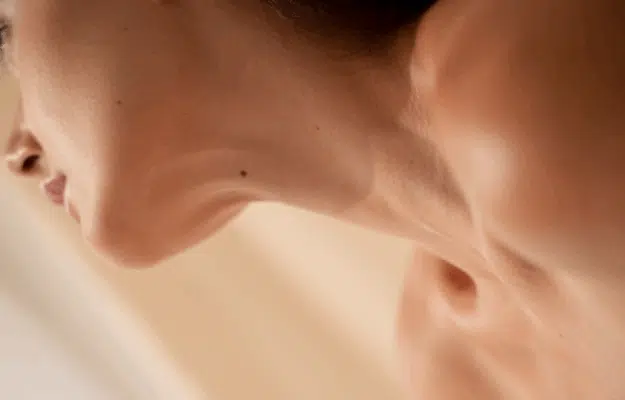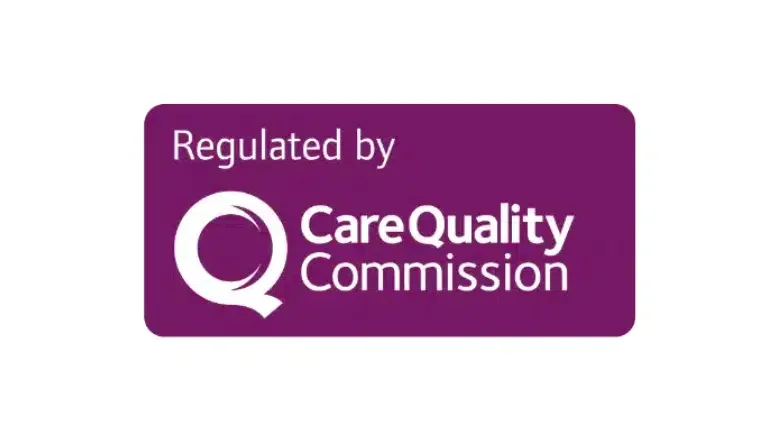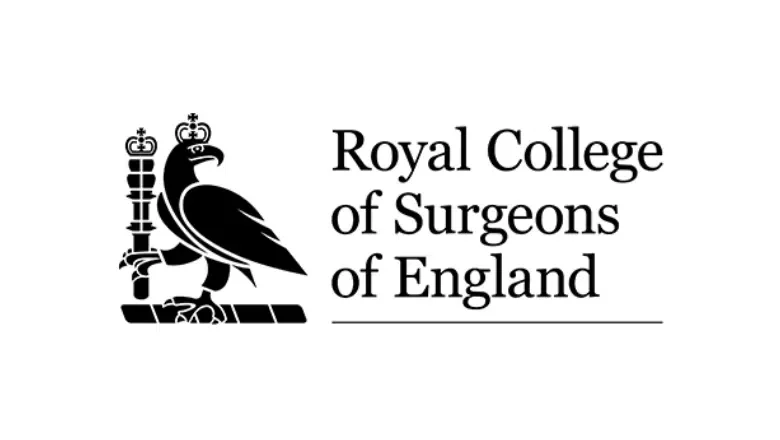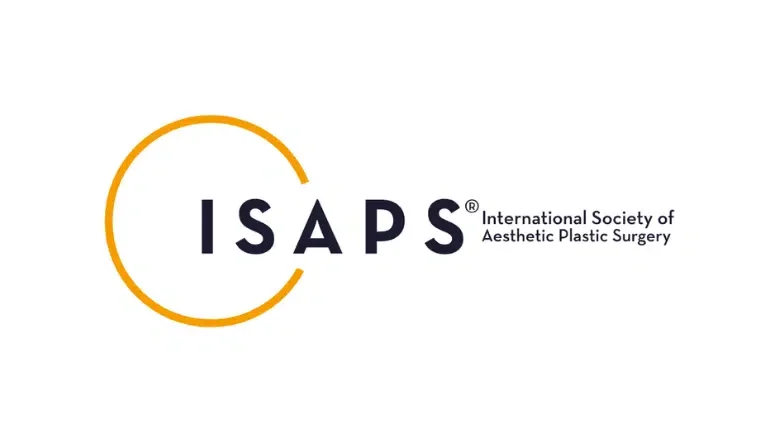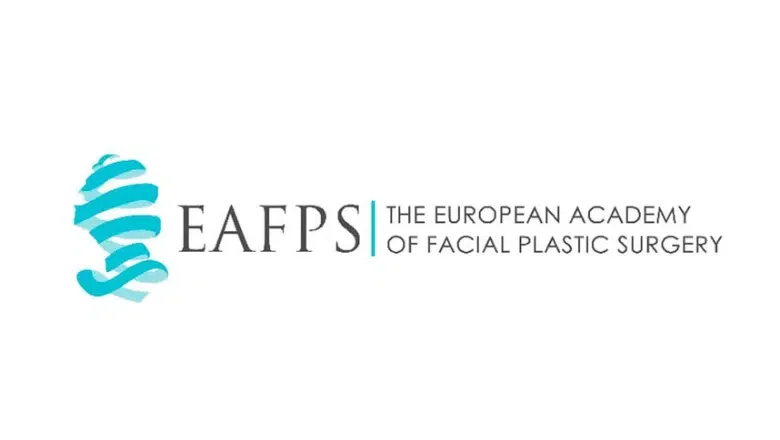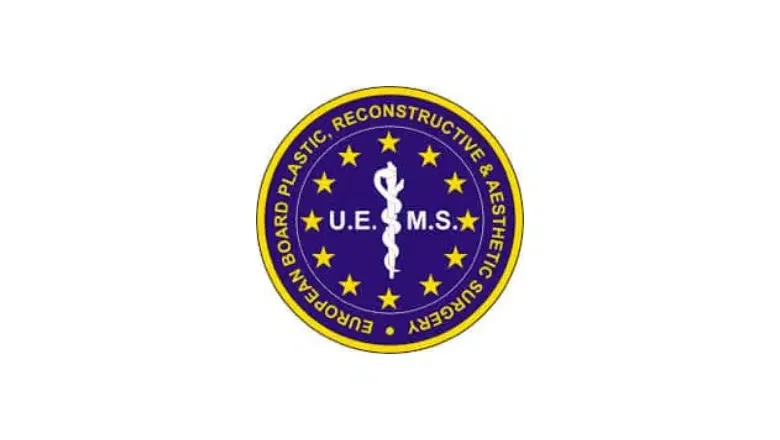Facelift surgery is one of the most popular facial rejuvenation procedures carried out in the UK and can make people look at least ten years younger. A facelift can help to get rid of wrinkles, sagging jowls and loose skin. Centre for Surgery is home to some of the top facelift experts in the UK. Here we answer your most commonly asked questions about facelifts.
RELATED: Facial Surgery
TYPES OF FACELIFTS
What type of facelift is best for me?
The most appropriate facelift procedure for you will be determined by several factors, including your pre-existing level of skin elasticity and the type of results you are hoping to achieve. At your in-person consultation, your plastic surgeon will perform a thorough physical examination to assess your facial skin and provide you with a customised treatment plan designed to address your needs and desires. There are many different types of facelifts, including traditional full facelifts, deep plane facelifts, mini facelifts for younger patients, mid facelifts, lower facelifts and neck lifts.
RELATED: 6 Questions To Ask Before Getting A Facelift
What are the different types of facelift surgery?
The most appropriate type of facelift procedure will be recommended once you have had an in-person consultation with a specialist Plastic Surgeon. The following procedures can be performed either singly or in combination to achieve impressive facial rejuvenation effects.
- Brow lift – a brow lift is also known as a forehead lift and is designed to eliminate fine lines and wrinkles affecting the brow and forehead. This helps to produce a more youthful appearance. A full brow lift involves making small incisions within the hairline and endoscopic lifting of a sagging brow. This is also known as an endoscopic brow lift.
- Temporal brow lift – a temporal brow lift is a type of mini brow lift involving a small incision on either side of the forehead followed by the removal of loose skin to tighten the outer part of the brow. Incisions are smaller with this procedure, and recovery is much quicker.
- Deep plane facelift – this procedure is ideal for people who have severe sagging of the facial soft tissues. A deep plane facelift can lift sagging cheeks and remove sagging jowls. This procedure produces the most natural-looking results of any facelift procedure.
- Mid-facelift (cheek lift) – a mid-facelift is a minimally invasive procedure and incisions opposition and just beneath the lower eyelids to lift sagging cheeks for a more rejuvenated midface.
- Eyelid lift – eyelid surgery, also known as blepharoplasty, involves removing excess skin and fat from the upper or lower eyelid. This helps to eliminate puffiness under the eyes for a more rested appearance. People with droopy eyelids can correct visual disturbance by eliminating excess skin hanging over the eyes.
- Lip lift – an upper lip lift, also known as a bullhorn lip lift, involves removing small amounts of tissue just beneath the nose to elevate the upper lip.
- Corner of the mouth lip lift – a corner lip lift helps to elevate sagging skin affecting the lateral corners of the mouth. This helps to eliminate a sad-looking facial expression which many people complain of as part of the ageing process affecting the lower face.
RELATED: Different types of facelift and neck lift
What is the SMAS layer?
The SMAS (superficial musculoaponeurotic system) is a layer of tissue in the face and neck that lies just beneath the skin. It is a complex network of muscles, tendons, and fascia (connective tissue) that extends from the deep facial muscles to the skin surface. The SMAS layer plays an important role in maintaining the structure and shape of the face, as well as in the movement of the face, such as smiling, frowning and other facial expressions.
A facelift, also called rhytidectomy, is a surgical procedure that aims to lift and tighten the skin and underlying tissues of the face, including the SMAS layer, to create a more youthful and refreshed appearance. A deep plane facelift, specifically addresses the SMAS layer, and its manipulation is considered key to achieving long-lasting, natural results.
RELATED: SMAS Facelift vs Deep Plane Facelift
Which facelift will give the most natural results?
If you would like to achieve the most natural-looking results with a facelift, we would recommend a deep plane facelift which can produce results that last in excess of 10 years.
What is a deep plane facelift?
A deep plane facelift, also known as a deep-plane rhytidectomy, is a surgical procedure that aims to lift and tighten the deeper layers of the face, including the muscles and underlying tissues. The procedure can provide several benefits, including:
- Natural-looking results: A deep plane facelift is designed to address the underlying structures of the face, which can result in a more natural-looking lift and a more youthful appearance.
- Improved facial symmetry: The procedure can help to correct asymmetry or imbalances in the face, resulting in a more balanced and harmonious appearance.
- Long-lasting results: A deep plane facelift is a more invasive procedure than other types of facelifts, but it can provide longer-lasting results because it addresses the deeper structures of the face.
- Rejuvenation of the neck: A deep plane facelift can also address the aging of the neck, which can be a significant concern for many people.
- Better overall facial volume: It can help address the loss of volume in the face, which can occur as a result of ageing.
RELATED: Comparing The Deep Plane Facelift with Traditional Techniques: Which Is Superior?
What is a mini facelift?
A mini facelift is also known as a short scar facelift and involves an incision located in front of the ear followed by tightening of the SMAS layer. People with mild to moderate signs of ageing in their 40s are particularly suitable for a mini facelift.
Is it worth getting a facelift?
Facelift surgery can produce results that can last much longer compared with non-invasive and minimally invasive cosmetic treatments.
How is a facelift different from a neck lift?
A facelift rejuvenates the lower and middle part of the face, including the jawline and cheeks. A neck lift tightens loose skin and muscles in the neck region for a fresher look.
Can a facelift tighten the neck?
Facelift surgery can reduce loose skin affecting the lower face and, when combined with a neck lift, can effectively tighten the neck.
Is the neck included as part of a lower facelift?
A lower facelift commonly includes a neck lift, and it is uncommon to have either procedure on its own.
Is it possible to have a neck lift on its own?
A neck lift can be performed on its own for ageing primarily affecting the neck, although it is most commonly combined with a lower facelift.
FACIAL AGEING
When do jowls begin to develop?
Saggy jowls most commonly develop in the late 40s or early 50s. In some people, it may appear as early as their 30s.
RELATED: How to Tighten up Sagging Jowls
What is the best treatment for saggy jowls?
The best treatment to get rid of sagging jowls and neck heaviness is a lower facelift combined with a neck lift.
Can a facelift eliminate wrinkles?
Facelift surgery can significantly reduce facial wrinkles by tightening the skin. Resurfacing procedures such as chemical peels or laser skin resurfacing can also help to reduce fine lines and wrinkles.
Will a facelift make me look younger?
Depending on the type of facelift, most procedures can make you look at least ten years younger.
What is the best way to get rid of jowls and lift the neck?
The best way to tighten neck skin and eliminate jowls is to have a facelift and neck lift. This will help people to achieve a rejuvenated and refreshed appearance.
Can a facelift make me look ten years younger?
A facelift can make people appear ten years younger or even longer when a deep plane facelift is performed.
Which is best – dermal fillers or a facelift?
The most appropriate cosmetic treatment will depend on the amount of facial ageing you have. Dermal fillers are ideal for treating mild signs of ageing with a non-surgical procedure. Facelift surgery is better reserved for moderate to severe facial ageing.
What are the facelift alternatives available?
There are several alternatives to facelift surgery offered at Centre for Surgery for people who may not yet be ready to have a facelift, including:
These treatments are ideal for younger patients with mild to moderate signs of ageing. For people with more advanced features of facial ageing, facelift surgery will be more appropriate. A mini facelift can target signs of ageing in people aged 40 to 50.
IDEAL CANDIDATES FOR A FACELIFT
How can I tell if I should get a facelift?
Several features of ageing affect the face, including fine lines, deeper wrinkles, and sagging skin, which are suitable for correction with a facelift.
What is the best age to have facelift surgery?
The best age depends on the degree of facial ageing you have. A mini facelift is suitable for people in their 40s. People aged 50 and over will be more suitable for a full facelift and neck lift. The deep plane facelift is the most advanced method of facial rejuvenation surgery.
RELATED: What is the best age for a facelift?
Am I suitable for a facelift?
Ideal patients for facelift surgery include people who have signs of ageing affecting the face. They have realistic expectations of what to expect after surgery. They should be non-smokers and should follow all necessary post-operative instructions.
Will a facelift improve signs of facial ageing?
A facelift helps significantly reduce fine lines, wrinkles, and loose skin, affecting the face and producing a youthful and well-rested appearance.
PREPARING FOR FACELIFT SURGERY
How should I prepare for facelift surgery?
Before surgery, you should follow the following recommendations:
- Stop smoking at least four weeks before surgery
- Avoid excessive sun exposure
- Stop taking any medications that may increase the risk of bleeding, such as aspirin.
- Eat healthy foods and keep well-hydrated
Will I need to lose weight before facelift surgery?
Patients need to be at or near their target weight before facelift surgery to get the best possible results and minimise complications.
FACELIFT PROCEDURE
What does facelift surgery involve?
Most types of facelift surgery are performed under general anaesthesia to eliminate pain and discomfort during the procedure. Your surgeon will first begin by making incisions in the marked areas. The location and length of the decision will depend on the type of results you are hoping to achieve. Your surgeon will place incisions within natural skin creases within the hairline and around the ear. The deep soft tissues are then surgically tightened, followed by the removal of excess skin. Once the optimum level of lifting has been achieved, the skin will be closed with dissolvable stitches.
What type of anaesthesia is recommended for a facelift?
General anaesthesia is recommended for most types of facelift surgery. A one-stitch facelift can be performed with a local anaesthetic in the clinic.
How long does facelift surgery take to perform?
The duration of facelift surgery will depend on the type of facelift undertaken. A full facelift and neck lift take between three and four hours to perform. Mini facelifts take between one and two hours to carry out.
Will I have scars after a facelift?
Yes. The location of facelift scars will be determined by the type of facelift undertaken. Your surgeon will position incisions within natural skin creases within the hairline, and around the ear to minimise scar visibility.
FACELIFT RECOVERY
What can I expect to feel after facelift surgery?
It is normal to experience bruising and swelling affecting the face after surgery. This is a normal side effect of a facelift and will gradually improve over the first two weeks after surgery.
RELATED: Facelift Recovery – top tips
Is a facelift painful?
A facelift, also known as rhytidectomy, is a surgical procedure that can be associated with some degree of pain and discomfort. However, the level of pain and discomfort can vary depending on the individual patient, the specific procedure being performed, and the type of anaesthesia used.
During the procedure, the patient will receive anaesthesia to minimise pain and discomfort. After the procedure, some patients may experience pain, swelling, and bruising in the areas where the incisions were made. This discomfort can usually be managed with over-the-counter or prescription pain medication, and most patients find that the pain and discomfort are minimal and manageable.
What recommendations should I follow to look after my face after surgery?
- For the first 72 hours after surgery, you should apply cold packs intermittently to the face to reduce swelling.
- Keep your head elevated when lying down.
- Avoid strenuous exercise, including going to the gym
- Clean your face with mild soap and water and gently dab to dry the skin.
What is the quickest way to recover from a facelift?
The following top tips will help you achieve a fast recovery after facelift surgery:
- Eat healthy foods with high lean protein intake
- Keep well hydrated by drinking plenty of water
- Sleep on your back and with your head elevated
- Avoid exposing your incisions to direct sunlight
- Keep the surgical incisions clean and dry
- Wear your compression garment as instructed
How long does facelift recovery take?
It takes between three and six months to recover fully from a facelift.
How long does it take for facial tightness to disappear?
Facial tightness will gradually improve over the first six weeks after a facelift.
How long does it take for ear discomfort to improve after facelift surgery?
You may experience mild discomfort affecting your ears after surgery, which can last up to 4 weeks.
What is the best sleeping position after a facelift?
You should always sleep on your back with your head elevated on a couple of pillows to avoid stress on the incision sites.
Is face massage beneficial after a facelift?
Localised gentle tissue massage is helpful in breaking down localised scar tissue and getting rid of small lumps.
How long does facelift swelling last?
Facelift swelling can last up to 2 weeks after surgery.
What is the best way to minimise swelling after a facelift?
The best way to reduce swelling after a facelift is to apply ice packs to the face during the first 22 hours and sleep with your head elevated on a few pillows.
How long should I wear the facelift compression garment?
You should wear the facelift compression garment for a minimum of two weeks.
What could happen if I fail to wear my compression garment?
Failing to wear a compression garment as recommended may increase swelling and potentially affect the final results of the facelift.
Will I need to wear a chin support after a facelift?
You will need to wear the recommended chin support for the first two weeks after a facelift.
When can I wash my hair after a facelift?
You may safely have a shower and wash your hair using mild soap and warm water two days after a facelift.
What is the best way to eliminate small lumps after facelift surgery?
Gentle facial massage can help to smooth skin and eliminate small skin lumps due to postoperative swelling.
When can I wear make-up after a facelift?
You may apply make-up two weeks after facelift surgery.
How long does it take for bruising and swelling to disappear after a facelift?
It can take up to 4 weeks for all bruising and swelling to disappear after a facelift.
What are the best foods to eat after facelift surgery?
You should focus on eating healthy and nutritious foods, including plenty of lean protein, for optimising wound healing. This includes chicken, white fish, avocado, nuts, seeds and lentils.
FACELIFT RESULTS
How long do facelift results last?
Facelift results can last up to 10 years and sometimes longer, especially with a deep plane facelift.
Does a facelift last forever?
A facelift procedure can produce results back and last ten years or more but is not a permanent procedure. A second facelift surgery may be required years later once signs of facial ageing begin to reappear.
Can you get a facelift twice?
Approximately ten years after the first facelift, a second facelift may be recommended to maintain the results of your original procedure, as facial ageing will continue to occur after a facelift.
How soon can I get a second facelift?
We would recommend waiting at least ten years after a primary facelift. If you have had a mini facelift, you may be able to have a full facelift approximately five years after mini facelift surgery.
RISKS AND COMPLICATIONS OF FACELIFT SURGERY
Can a facelift affect how the ears look?
A facelift can affect the position of the ears in some cases.
Can your earlobes be affected by a facelift?
The earlobes may be slightly stretched after having a facelift.
What is a “pixie ear” deformity?
A “pixie ear” after a facelift refers to a complication that can occur as a result of the surgical procedure, in which the ear appears smaller or misshapen. This can happen if the skin and tissue of the ear are pulled or manipulated during the facelift, causing damage to the ear’s structure or shape.
The degree of deformity can vary, but common symptoms include a smaller or misshapen ear, a folded or “crumpled” appearance, and/or loss of the natural contour of the ear. Pixie ear deformity can be treated surgically through ear reconstruction. Depending on the degree of deformity, the correction may involve reshaping or repositioning of the cartilage, skin excision or re-draping, or even a combination of these procedures.
RELATED: What is pixie ear correction?
Do facelift results look natural?
Facelifts, when performed by a specialist plastic surgeon, are designed to produce natural-looking results. A deep plane facelift is known for producing a very natural appearance.
FACELIFT COSTS, PRICING AND FINANCING
Is a facelift worth it?
A facelift is considered one of the most effective surgical procedures to rejuvenate ageing faces to produce a youthful, refreshed and more vibrant appearance.
RELATED: Is a facelift worth it?
How much does a facelift cost?
The cost of facelift surgery would be determined by several factors, including the type of facelift, the amount of skin elasticity you have, whether the procedure will be combined with other treatments such as blepharoplasty or fat grafting and the location of the procedure.
RELATED: How much does a facelift cost?
CELEBRITY FACELIFTS
Which celebrities have had a facelift?
Many celebrities have undergone facelift surgery, but most do not publicly disclose it. In general, celebrities do not publicly share their health information and plastic surgery procedures. However, some celebrities have been open about their facelifts and have spoken publicly about their experience.
Some examples include:
- Joan Rivers: The late comedian and television personality was open about her numerous plastic surgeries, including facelift surgery.
- Kenny Rogers: The late singer and actor has spoken publicly about his facelift surgery and said he had it done to improve his appearance and boost his confidence.
- Sharon Osbourne: The television personality and host has been open about her facelift surgery, stating that she had it done to improve her appearance and boost her confidence.
- Sylvester Stallone: The actor has spoken publicly about his facelift surgery and has said that he had it done to improve his appearance and boost his confidence.
- Priscilla Presley: The actress and businesswoman has been open about her facelift surgery, stating that she had it done to improve her appearance and boost her confidence.
Facelift Surgery at Centre for Surgery
Centre for Surgery is the leading cosmetic surgery clinic in London and is home to some of the top facelift experts in the UK. We specialise in the full range of facelifts, including:
Call us today on 0207 993 4849 to schedule an in-person consultation at our state-of-the-art Baker Street clinic in London to find out if facelift surgery is suitable for you.


